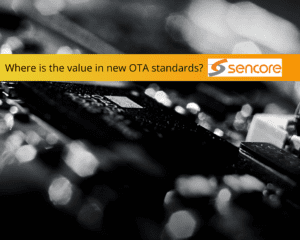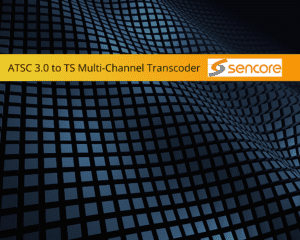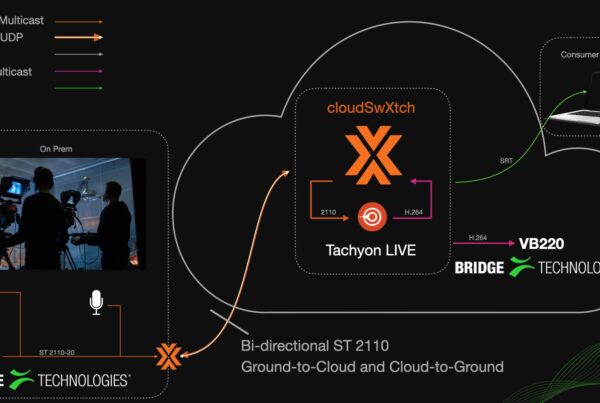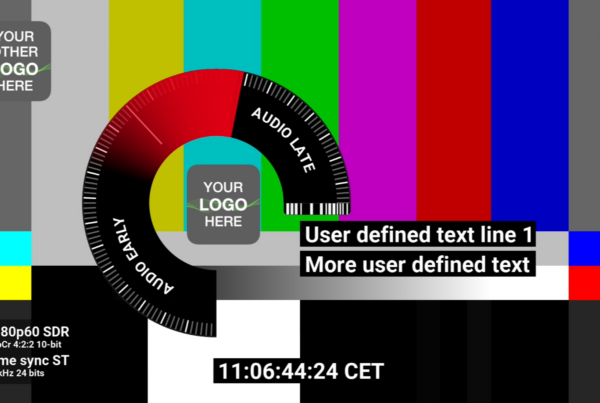Every new acronym means yet further progress in the broadcast industry
Blog
What’s in a name? What’s the difference between an acronym and an initialization?
An acronym is when the first letter of the full name or phrase is used to create a new word that you actually pronounce. So words like NASA and laser are included in that group (so is GIF for that matter, but that’s a can of worms we don’t want to open…).
On the other hand, an initialization is a phrase that has been shortened to its first letters, and you say them individually: VIP, ATM and DVD, for instance. Or BRB, DND, CBA.
Regardless of whether it’s acronyms or initializations though (and some that can be argued as both, see for instance the ‘scutee’ versus Es See Tee Eee debate…), there can be no doubt – the broadcast industry is packed with them. Of course, specialist language is part and parcel of every industry and niche interest, but in the broadcast industry it seems particularly egregious: why do engineers love naming things with a seemingly nonsensical string of numbers and letters, with only subtle variations between them!? Did it all start with Terminator and the T-800!? We have no shame in admitting that even we – professionals with decades of broadcast experience – occasionally struggle to keep the endlessly growing list of HEVC and SMPTE standards straight in our minds!
But we must remember, one good thing about every new acronym is: it means yet further progress in the broadcast industry. Each iteration means a further refinement; a way of doing things more quickly, more efficiently, more reliably, with greater cost effectiveness and increasingly higher levels of quality. If remembering one more string of numbers and letters means we can deliver 4K video with next to no latency half-way across the globe or compensate for dropped packets to ensure immaculate delivery to audiences of millions – well that seems a small price to pay.
Welcome to the club: ATSC 3.0
Which is why we’re very happy to add ATSC 3.0 to our growing dictionary of standards.
You may well already be aware, ATSC 3.0 represents the most recent evolution of standards forwarded by the Advanced Television Systems Committee. Their first generation – released in 1996, approved for deployment in 1998 and fully deployed in 2009 – was fundamental in ushering the change from analog to digital.
Now, more than 25 years later, we have ATSC 3.0, built for a new age of broadcast conventions. But is there really any value in investing in new standards for Over-The-Air (OTA) broadcast transmission?
(Amongst all of this, you might also be asking what happened to ATSC 2.0? It seemed like ATSC were being sensible and straightforward: ATSC 1, 2, 3. But don’t be fooled, because ATSC 2.0 was actually skipped – so ATSC can arguably count themselves amongst the likes of HEVC and SMPTE for bizarre, seemingly-nonsensical naming conventions!).
Too late, or just the right time?
But back to our core question – where is the value in new OTA (Over-the-Air) standards? The media has a tendency towards hyperbole – we all know that – so when it comes to the idea that the ‘death of television’ has occurred, we’d argue this is a bit of an overstatement. Of course, there can be no doubt that the power of IP has fundamentally changed the landscape of the market, but the reality is there are still many millions of people who watch TV the ‘conventional’ way – beamed across the ether, direct to their TV, with a linear and semi-limited range of channels and options to pick from.
And it’s important that the broadcast market aims to bring OTA audiences the best experience, rather than treating OTA audiences as dinosaurs. ATSC 3.0 works to do exactly this. Crucially, it has the capacity for multiscreen and interactive elements – something beneficial not only to audiences, but advertisers too. More than this though, it delivers 4K resolution, improved sound quality and HDR content, and allows OTA to be delivered to mobile devices. In essence, it delivers the best of both worlds; allowing those who are still attached to the concept of OTA (or who are limited in their broadband access) to enjoy the benefits of their OTT and IPTV counterparts.
 All this comes with greater reliability too – which is of course a challenge whether broadcast is delivered terrestrially, over the internet, via satellite or through cable. The use of Orthogonal Frequency Division Multiplex (OFDM) modulation – as opposed to 8VSB – allows for greater spectral efficiency (that’s nothing to do with ghosts) and makes it less likely to suffer from multi-path interference. Adaptive bit-rate technology is also crucial in ensuring Quality of Experience, and in particular, ensuring there is no drop for one of OTA’s most important assets: live sports.
All this comes with greater reliability too – which is of course a challenge whether broadcast is delivered terrestrially, over the internet, via satellite or through cable. The use of Orthogonal Frequency Division Multiplex (OFDM) modulation – as opposed to 8VSB – allows for greater spectral efficiency (that’s nothing to do with ghosts) and makes it less likely to suffer from multi-path interference. Adaptive bit-rate technology is also crucial in ensuring Quality of Experience, and in particular, ensuring there is no drop for one of OTA’s most important assets: live sports.
The roll-out is going strong in the States, with Jamaica and Canada following soon. But there are a few obstacles; Covid having been one of them, but also a lack of band allocation and a requirement by the FCC that ATSC 1.0 support is maintained in parallel until 2023, with the potential for this sunset date to be pushed back yet further. But with the right support, ATSC will soon see the levels of market penetration needed to realize its full benefits to audiences across Northern America.
All in it together
That support will come from an industry engaged in collaborative, interoperable thinking – a drum we’ve been banging in many of our recent blogs. We intend to be a key part of that support – and one of the ways we’re able to do that is through our ATSC 3.0 to TS Multi-Channel Transcoder.
Now we’ll admit to some hypocrisy here: it’s called the TXS 3800 – it couldn’t be a more stereotypical broadcast tech name if it tried. Why couldn’t we have named it after one of our favorite movie characters or something!? (that’s an in-joke that we’ll be explaining to you in our next blog, so keep your eyes peeled).
But name aside, the TXS 3800 represents a robust and reliable multi-channel 1RU ATSC 3.0 to Transport Stream transcoder. What this means, in essence, is that MVDPs can take ATSC 3.0 RF inputs and convert them to the ATSC 1.0-like formats and video/audio codecs they need for their existing distribution systems, output as IP multicasts or unicasts for distribution and repackaged across up to four programs/services.
As always, this kind of product represents Sencore’s efforts to maximize the options and flexibility that broadcasters have in how they distribute content; picking options that leverage broadcaster’s own existing infrastructures, and ensuring that audiences are provided with choice and excellence when it comes to Quality of Experience.
Because ultimately, it doesn’t matter what you call your product. It isn’t even completely about what the product does. It’s about the values the product embodies and promotes, and for us at Sencore those remain consistent: collaborative, interoperable functionality that allows the industry to work together and push the boundaries of broadcast delivery with one central aim: improved audience experience.






